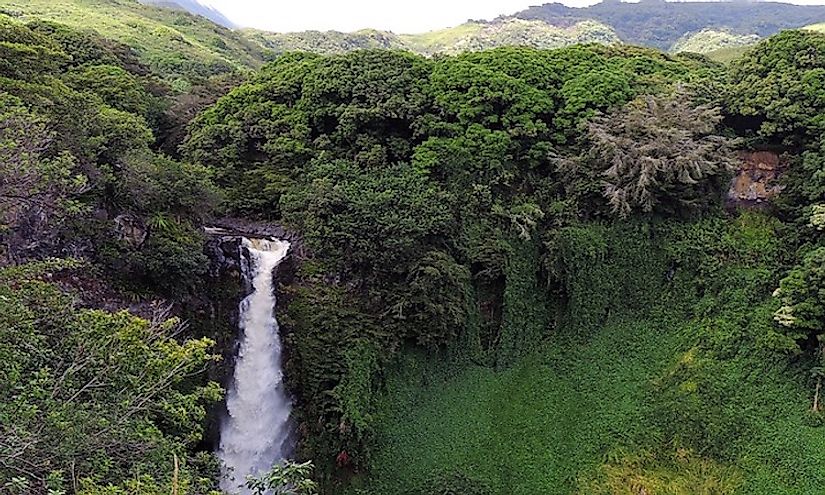Ecoregions With The Highest Percentage Of Endemic Plants

Endemism and species richness are important in the global prioritization of conservation measures. Plants and animals are confined to different ecoregions across the world. An ecoregion covers a large area of land or water and contains distinct geographical characteristics from other ecoregions. Ecoregions can be divided into terrestrial or land, marine, and freshwater. Some ecoregions are characterized by species richness and endemism while other ecoregions such as ones with desert like conditions and high rate of glaciations are deprived of biodiversity. Apart from geographical characteristics, ecoregions can also be ranked according to the speed of endemism.
What Is Endemism?
Endemism is an ecological state in which a species is unique to a defined geographical region or ecoregion such as an island, nation, or another habitat type. Endemic species are therefore plants and animals which exist only in one geographic area. Plants and animals which are indigenous to a place are not endemic to it if they can be found somewhere else even in traces. For a species to be endemic, it has to be exclusively in one habitat and nowhere else. There are two categories of endemism, "paleoendemism" referring to species that were once found in different ecoregions but are now restricted to a specific area and "neoendemism" referring to species that have arisen recently through reproductive isolation
Why Do Some Ecoregions Have Relatively Higher Rates Of Endemism?
Endemic species develop in geographically isolated areas such as islands such as the Southern tip of Africa, Hawaii, and Australia. The physical, climatic, and biological factors of these ecoregions are contributing factors to endemism. The species in these areas have adapted to the unique conditions such as climate, soil, and feeds that favors their development and welfare. These isolated islands make it difficult or impossible for the species to cross over to other habitats, therefore, confining them to such particular isolated environment. The environmental and climatic changes have also pushed species to specific ecoregions where they can develop, and their welfare met. Poor adaptation to different types of environmental conditions and less efficient reproductive cell of these species makes them unable to disseminate to far off places, therefore, confining them to a particular ecoregion.
Areas Rich In Endemic Plants
The high rate of endemism is found on the isolated islands ecoregions such as Hawaii tropical rainforest and dry forest in the US and New Caledonia rainforest. Hawaiian Island is the most isolated island on earth and is well known for environmental diversity. Some of the Hawaiian endemic plant species include Yellow hibiscus, Alula, Hawaii silversword, and Akala. Hawaii and the neighboring islands have a wealth of locally-evolved species. The Fynbos ecoregion in South Africa boast of high plant diversity and endemism and has been identified as a biodiversity hotspot by the conservation international. The Philippine island provides habitats for several types of native plants and herbs including Philippine teak, Kalingag, and Copeland’s Pitcher Plant. The desert conditions of Mexico support over 6,000 plant species of which 90% of the plants are endemic to the deserts of Mexico. Sierra Madre de Oaxaca pine-oak forests ecoregion of Mexico is home to large endemic plants including the endangered Abies hickelii species
Why Is Endemism Threatened Today?
Because of the limited geographic range, endemic plant species are vulnerable to human invasion and habitat destruction. Agriculture, mining, logging, and urban growth are some of the threats to endemism in most of the countries. The unique and rare plant species are also in demand for various uses around the world. Some of these plants are considered traditional medicine while others are unique in carpentry further threatening their existence.
Ecoregions With The Highest Percentage Of Endemic Plants
| Ecoregion | Country |
|---|---|
| Fynbos | South Africa |
| Hawaiian tropical dry forests | United States |
| Hawaiian tropical rainforests | United States |
| Kwongan heathlands | Australia |
| Madagascar dry deciduous forests | Madagascar |
| Madagascar lowland forests | Madagascar |
| New Caledonia dry forests | New Caledonia |
| New Caledonia rain forests | New Caledonia |
| Sierra Madre de Oaxaca pine-oak forests | Mexico |
| Sierra Madre del Sur pine-oak forests | Mexico |
| Luzon montane rainforests | Philippines |
| Luzon rainforests | Philippines |
| Luzon tropical pine forests | Philippines |
| Mindanao montane rain forests | Philippines |
| Mindanao-Eastern Visayas rain forests | Philippines |
| Palawan rain forests | Philippines |











